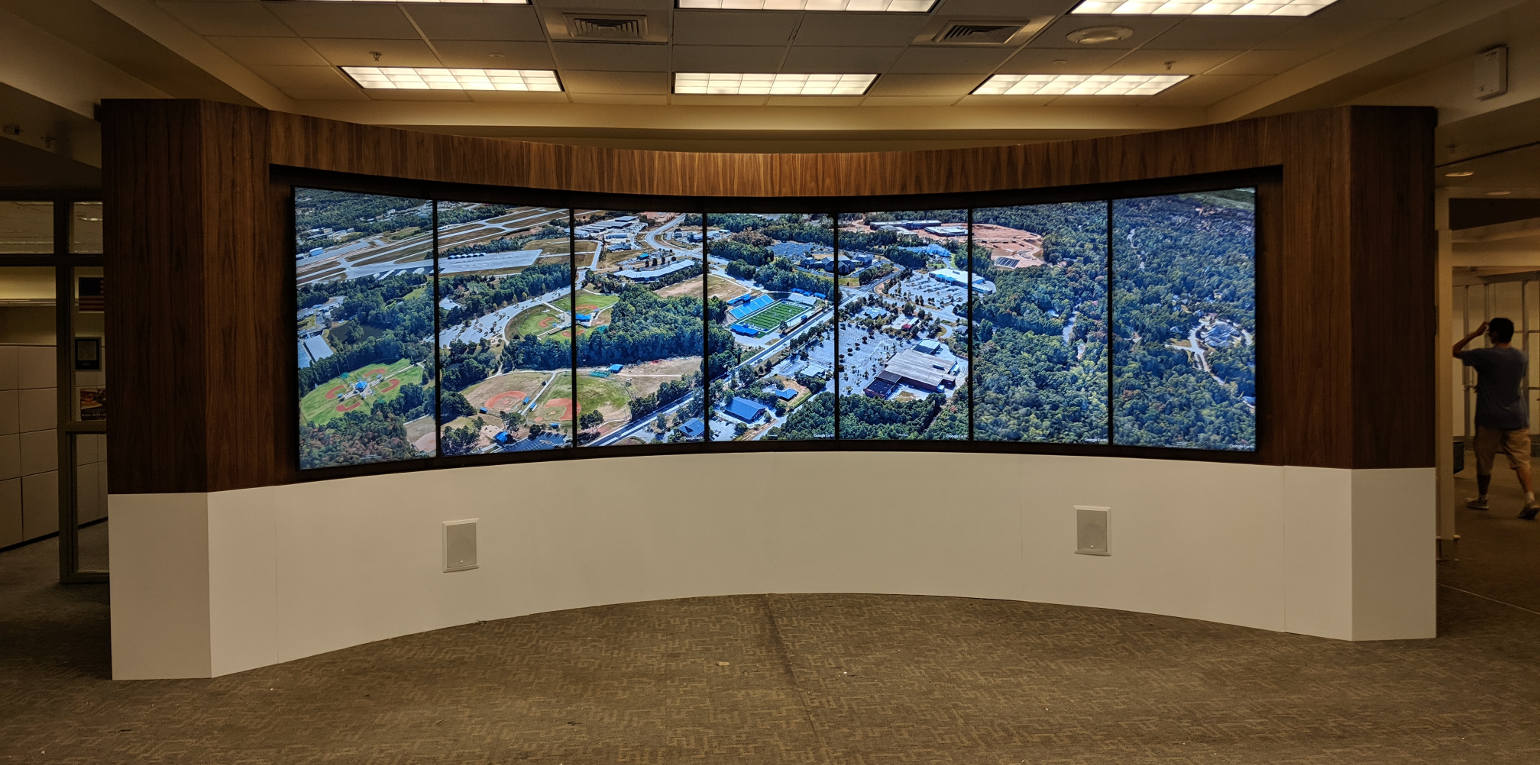Project On-ramping: Infrastructure and Codebase
 Photo by NASA via Unsplash
Photo by NASA via Unsplash
Living in the consulting world, we often jump into codebases and environments to get quickly up to speed to provide estimates or start fixing bugs right away. Here are some important landmarks I visit along my way to get up to speed on a new project.
Dev stack
First up, I learn as much as I can about the dev stack a codebase runs on. It used to be the case that LAMP (Linux, Apache, MySQL, PHP) was a pretty common setup in our world, but the number of dev tools and variety in stacks has expanded greatly over time. Many of my End Point clients are now running nginx on Linux, with Ruby on Rails and MySQL or PostgreSQL, but as a company we have both breadth and depth in web stack technologies (hover over the Expertise dropdown above).
Layered on top of the base infrastructure might be a JavaScript framework (e.g. React, Ember.js), and other abstractions to improve the dev process (e.g. Sass, Node.js). And layered on top of that further is the possibility of other services running on the server locally (e.g. search using Elasticsearch or Solr) and 3rd-party tools running on a server elsewhere (e.g. content delivery networks, monitoring, Stripe).
The web stack …
rails clients development
Seeking a PHP developer
This position has been filled. See our active job listings here.

We are looking for another PHP software engineer, to work with us during business hours somewhere in the UTC-7 to UTC-4 time zones (U.S. Pacific to Eastern Time). This is a contract-to-hire role, and can be full time or part time.
End Point is a 23-year-old Internet technology consulting company based in New York City, with about 50 employees, most working remotely from home offices. We collaborate using SSH, GitLab, GitHub, chat, video conferencing, and good old email and phones.
We serve many clients ranging from small family businesses to large corporations.
What you will be doing:
- Develop new web applications and support existing ones for our clients
- Work together with End Point co-workers and our clients’ in-house staff
- Use your desktop OS of choice: Linux, macOS, Windows
- Use open source tools and contribute back as opportunity arises
What you bring:
Professional experience with web application development and support:
- 5–7 years of development with PHP (older 5.x and newer 7.x versions) and JavaScript
- Frameworks such as Symfony or Laravel
- Databases such as PostgreSQL, MySQL, MongoDB, Redis, Solr, Elasticsearch, etc.
- Security consciousness
- Git version control
- Automated …
jobs-closed php remote-work
Custom cabinets for the Liquid Galaxy

End Point is proud to announce a new offering in its product line: Liquid Galaxy systems built into beautiful custom cabinets! Our first custom cabinet was created and installed at Auburn University’s Ralph Brown Draughon Library this past month. Both we and the University are thrilled with the success of this install.
Cabinets provide a perfect hybrid solution for clients who want the look of permanence and grace that comes with a wall-mounted system, but are somehow limited by their physical space. Until now, clients were given options of an entry-level system on a portable aluminum frame (great for those in need of moving displays to various locations) or permanent wall-hung systems that are a build-out of a curved reinforced wall.
In the case of the recent installation at Auburn University (pictured top), the library staff elected to have a cabinet built because the wood-grained structure was more conducive to the architectural integrity of their beautiful library and the popular location they wanted it to be in.
(Update in December 2021: You can learn more about Auburn University’s installation in my follow-up after two years of operation at the library.)
Other custom …
visionport
Google Drive for virtual machine images

Recently we decommissioned an old database server. We wanted to keep a copy of its 53.7 GB virtual machine disk image in an archive in case there is ever any need to revive it. It is really unlikely that we will need it any time soon, or maybe ever, so we thought of putting it in one of the cloud storage services.
Cloud storage
Cloud service pricing is often metered by storage, network, operations, and other fees, making it complicated to calculate what you will pay. We already use Amazon S3, Azure Storage, and Google Cloud Storage and they are all no exception. For our example 53.7 GB disk image, the Google Cloud Storage Standard Storage pricing is currently:
- No charge for network ingress when we upload it
- About $1.08 to $1.40 USD per month to store the file in the US or EU
- About $6.50 each time we download the file to most places in the world!
These days a ~50 GB disk image is on the small side, so you can imagine the cost going up rapidly with larger disk sizes.
Some cloud storage providers offer lower prices for slow-availability semi-offline storage, such as Amazon S3 Glacier or Google Coldline Storage. Those would indeed save us some money for monthly storage, but the …
sysadmin cloud storage
React: Style Tips

Photo by Harpal Singh on Unsplash
I’ve worked on a couple of large React projects over the last few years. In my experience, one of the trickiest parts of getting a React project up and running is figuring out how you want to visually style your application in the browser, so I’ll share in this post some of the ways I’ve styled my projects.
CSS Modules
Libraries like Material-UI (which I’ll discuss next) do a lot of the work of styling for you. However, sometimes you’ll still need to define styles unique to your project, and the most common way is with CSS.
For projects created with create-react-app, any CSS you include in a React project isn’t scoped. This means that if you define a class tall in one component that has a height of 40 pixels and a class tall in another component with a height of 80 pixels, one of your rules will overwrite the other—whichever makes it into the compiled CSS file last. However, webpack allows you to use CSS modules, which restrict your CSS rules to components that explicitly import them. It took me a long time to figure out how to use them due to lack of relevant documentation, but eventually I discovered a very easy way to do it.
If your file …
javascript react css
Keeping our Windows Server clean
 Photo by Shawn O’Neil, used under CC BY 2.0, cropped from original
Photo by Shawn O’Neil, used under CC BY 2.0, cropped from original
Introduction
I have been running websites and web applications under Windows Server for years, for both work and personal purposes. Most of them were small websites with a few daily visitors, but one particular case (a weather website I originally created as a hobby) grew over time to around one million page views per month.
The website is mostly ASP.NET, with some services and components written in PHP and Python, and uses MySQL for persistence (as well as a bunch of XML/PNG files to cache weather forecasts and weather imagery). As months passed by, I’ve discovered that the default IIS and Windows log files will grow drastically so, while checking its content periodically to detect issues and vulnerabilities, we need to take action to preserve free disk space and server performance.
Internet Information Services log files
In our IIS public folder (by default C:\inetpub) we will have a path logs\LogFiles. Inside that folder, the IIS service will create a set of folders, one per HTTP/FTP service that is running under our instance. How fast it will grow depends on many things, mainly traffic, but also website …
windows iis logging sysadmin
OpenITI Starts Arabic-script OCR Catalyst Project
 Photo by Free Quran Pictures 4K, cropped, CC BY 2.0
Photo by Free Quran Pictures 4K, cropped, CC BY 2.0
Congratulations to the Open Islamicate Texts Initiative (OpenITI) on their new project the Arabic-script OCR Catalyst Project (AOCP)! This project received funding from the The Andrew W. Mellon Foundation this summer.
End Point developer Kamil Ciemniewski will be serving the project as a Technology Integration Specialist. Kamil has been involved with OpenITI since 2018 and with the affiliated project, Corpus Builder, since 2017.
Corpus Builder project version 1.0 made collaborative effort possible in producing ground truth datasets for OCR models training. The application acts as a versioned database of text transcriptions and a full OCR pipeline itself. The versioned character of the database follows closely the model used by Git.
What is remarkable about it is that it brings the ability to work on revisions of documents whose character isn’t linear as text in the Git case. For the OCR problem, one needs both textual data but also the spatial: where exactly the text is to be found.
A sophisticated mechanism of applying updates to those documents minimizes (with mathematical guarantees) the chance of introducing merge conflicts. …
clients machine-learning natural-language-processing
Campendium: A Responsive, Fancy Detail Page

This week, I was very excited to deploy a project for Campendium, one of our long-time clients. As noted in my recent post on Campendium updates for the year, Campendium has thousands of listings of places to camp and provides a great infrastructure for the development of a rich community of travelers around North America.
For the past few months, I’ve been working on a significant update to Campendium’s campground detail page, the page template where in-depth information is provided for each of Campendium’s locations. This is equivalent to a product detail page on an ecommerce site.
The “guts” of the update included a new detail page design with expanded responsiveness, the introduction of 360° videos, and expanded user driven content in the form of Question & Answer (Q&A or QnA), reviews, notes, nightly rates, etc. Read on to find out more and see video examples of several of the features!
User Interface & Responsiveness Updates
One of the things the Campendium team and I are most proud of here is the responsiveness of the new design. In the case of traveling and camping, responsiveness is important since a large amount of traffic comes from mobile devices, relative …
rails solr sunspot react maps javascript user-interface ruby clients case-study





